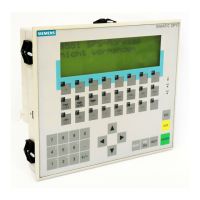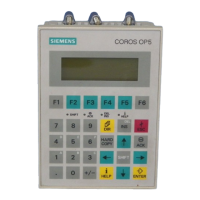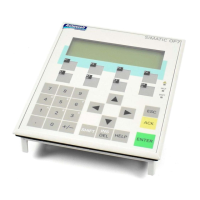15-2
Manual OP5, OP15
( ) J31069-D0840-U001-A2-7618
15.1 Setup Guidelines for Interference-Proof Installation
An automation system must be shielded to prevent interference.
When a system is poorly grounded, low-frequency and high-frequency inter-
ference signals can penetrate the internal bus of the PLC and cause malfunc-
tions.
Interference signals can also be caused when relays or contactors switch
(very rapid changes in current or voltage; high-frequency interference sig-
nals) or when two parts of a system have different grounding potentials (low-
frequency signals).
Use only shielded cables for all signal connections.
Ground the shields of cables on two sides for
cables to the PLC,
bus cables,
cables to I/O devices.
The standard cables specified in the ST80.1 catalog meet these requirements.
Screw down or lock all plug connections.
Do not install signal lines parallel to high-voltage lines. Use a separate cable
duct located at least 50 cm from high-voltage lines.
The basis of interference-free operation is the hardware setup of the PLC.
Any interference signals caused by the process must be kept away from the
hardware setup to the extent possible.
Install devices which could bring in interference signals from the outside at
the bottom of the cabinet. Place the grounding rail directly at the cabinet en-
trance so that cables which could be carrying interference signals can be ap-
plied directly to grounding potential. Apply all shielded lines with the shield
here. Apply only the outer shield of double-shielded signal lines here.
Install long signal lines along the cabinet walls. Setting up the cabinet in ac-
cordance with EMC guidelines is an important factor in the reduction of in-
terference. All grounding connections in the cabinet must have large cable
cross sections and be applied over a large surface.
Insulate analog devices in the switching cabinet and ground them to a single
point in the cabinet using copper tape.
Shielding
Use and
installation of
interference-proof
cables
Separate cable
duct for signal
lines
Interference-proof
hardware setup
Cabinet setup
Electrical Installation

